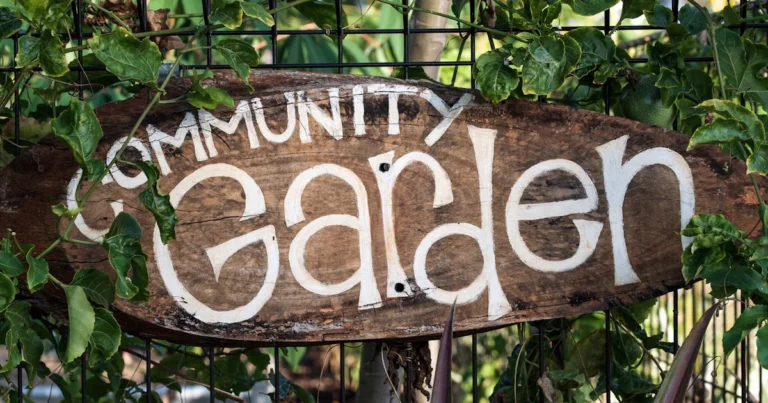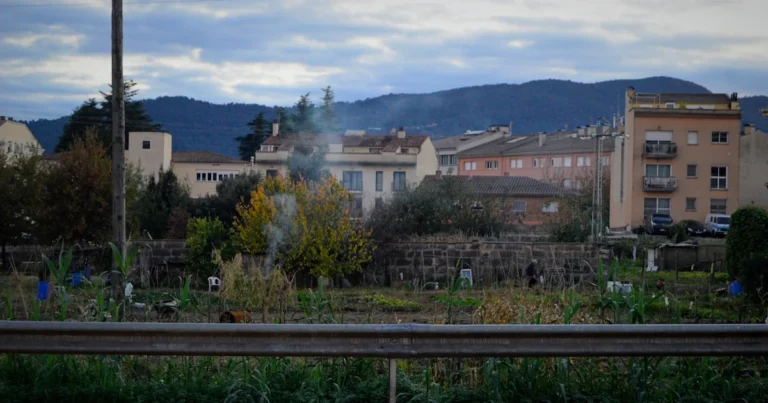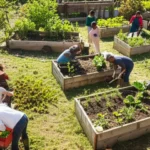Support our educational content for free when you purchase through links on our site. Learn more
Ever wonder what thrives best in a shared garden space? We’ve all experienced that moment of planting doubt – will my zucchini take over the whole plot? Will my tomatoes even ripen? At Community Gardening™, we’ve helped countless gardeners navigate these questions, and we’re here to share our expert advice on selecting the top 20 vegetables, herbs, and flowers that flourish in community gardens. From easy-to-grow lettuce to vibrant pollinator-attracting flowers, we’ll guide you to a bountiful and harmonious shared gardening experience. We even tackle common challenges like pests and diseases, ensuring your community garden plot is a success. Ready to discover the perfect plants for your shared space? Let’s dive in!
Key Takeaways:
- Choose easy-to-grow plants like lettuce, radishes, and zucchini for beginners.
- Select plants suited to your climate and soil type using resources like the USDA Plant Hardiness Zone Map.
- Maximize your harvest with techniques like succession planting, companion planting, and proper watering.
- Address pests and diseases using integrated pest management (IPM) strategies.
- Foster a strong community by respecting shared space, communicating openly, and following garden guidelines.
👉 Shop for your gardening essentials:
- Gloves: Amazon Search for Gardening Gloves | Walmart Search for Gardening Gloves
- Tools: Amazon Search for Gardening Tools | Home Depot Search for Gardening Tools
- Seeds: Amazon Search for Vegetable Seeds | Burpee Seeds Official Website
Table of Contents
A Brief History of Community Gardening and its Impact on Plant Selection
What to Plant in Your Community Garden Plot: A Beginner’s Guide
Top 20 Vegetables for Thriving Community Gardens
Top 15 Herbs That Flourish in Shared Garden Spaces
Best Flowers and Pollinator Plants for Community Gardens
Maximizing Your Community Garden Harvest: Tips and Tricks
Dealing with Pests and Diseases in a Shared Gardening Environment
Community Garden Etiquette and Best Practices
Choosing the Right Tools and Supplies for Your Community Garden Plot
Troubleshooting Common Community Garden Challenges
The Social Benefits of Community Gardening: More Than Just Plants!
Quick Tips and Facts
Let’s get our hands dirty with some quick wins for your community garden adventure! 🥕🌱
- Choose easy-to-grow plants: Start with low-maintenance veggies like lettuce, radishes, and zucchini. These are forgiving if you miss a watering or two (we’ve all been there!).
- Think about your climate: Select plants that thrive in your local conditions. Check out the USDA Plant Hardiness Zone Map https://planthardiness.ars.usda.gov/ to find your zone.
- Plan for succession planting: Extend your harvest by planting fast-growing crops like spinach and then following up with slower-growing ones like tomatoes. This keeps your plot productive all season long!
- Consider companion planting: Some plants help each other out! For example, basil planted near tomatoes can deter pests. Learn more about companion planting techniques https://www.almanac.com/companion-planting.
- Don’t forget the pollinators: Attract bees and butterflies with colorful flowers. They’re essential for a bountiful harvest! Learn how to create a pollinator-friendly garden https://www.nwf.org/Native-Plant-Habitats/Create-and-Certify/At-Play/Kids-and-Families-Garden-for-Wildlife.
A Brief History of Community Gardening and its Impact on Plant Selection
Community gardening has a rich history, often linked to times of scarcity and social change. During World War I and II, “victory gardens” became incredibly popular, boosting food production and community spirit. This era emphasized practical, high-yield crops like potatoes, beans, and tomatoes. Learn more about the history of victory gardens https://www.nps.gov/articles/000/victory-gardens-on-the-world-war-ii-home-front.htm.
Today, community gardens serve diverse purposes, from food security to social connection. This shift in focus has broadened plant selection. While productive plants remain important, there’s a growing emphasis on diversity, including herbs, flowers, and less common vegetables. We see this reflected in the wide array of plants grown in our Community Gardening™ programs. How Community Gardens Grow 10 Powerful Social Connections 🌿 (2025) is a great example of this shift. https://www.community-gardening.org/how-do-community-gardens-promote-social-connections-and-a-sense-of-community/
What to Plant in Your Community Garden Plot: A Beginner’s Guide
Choosing the right plants is half the battle! Here’s a breakdown to help you decide:
Factors to Consider:
- Space: How much room do you have? Compact varieties are perfect for smaller plots.
- Sunlight: How many hours of sun does your plot get? Some plants need full sun, while others prefer shade.
- Soil type: Is your soil sandy, clay, or loamy? This impacts plant selection.
- Your experience level: Start with easy-to-grow plants if you’re a beginner.
- Your tastes: What do you and your family enjoy eating?
Recommended Plants for Beginners:
- Lettuce: Fast-growing and easy to harvest.
- Radishes: Ready to harvest in just a few weeks.
- Zucchini: A prolific producer that’s relatively low-maintenance.
- Bush beans: Compact and easy to grow.
- Cherry tomatoes: Abundant yields with minimal fuss.
Top 20 Vegetables for Thriving Community Gardens
We’ve compiled a list of our top picks, considering ease of growth, yield, and popularity among our gardeners:
| Rank | Vegetable | Notes |
|---|---|---|
| 1 | Tomatoes | Choose determinate varieties for easier management. |
| 2 | Lettuce | Many varieties, from loose-leaf to head lettuce. |
| 3 | Zucchini | Prolific producer, but can take over if not managed. |
| 4 | Bush Beans | Easy to grow, requires regular harvesting. |
| 5 | Peppers (Sweet/Hot) | Choose varieties suited to your climate. |
| 6 | Cucumbers | Consider vining or bush varieties depending on space. |
| 7 | Summer Squash | Similar to zucchini, but with different varieties. |
| 8 | Radishes | Quick to mature, perfect for succession planting. |
| 9 | Carrots | Requires loose, well-drained soil. |
| 10 | Beets | Relatively low-maintenance. |
| 11 | Spinach | Fast-growing, prefers cooler temperatures. |
| 12 | Kale | Cold-hardy, can withstand light frost. |
| 13 | Swiss Chard | Similar to spinach, but more heat-tolerant. |
| 14 | Green Beans | Pole beans require support, while bush beans are more compact. |
| 15 | Broccoli | Needs consistent watering and fertilization. |
| 16 | Cauliflower | Similar to broccoli in terms of care. |
| 17 | Cabbage | Can be stored for a longer period after harvest. |
| 18 | Brussel Sprouts | Cold-hardy, flavor improves after frost. |
| 19 | Potatoes | Requires ample space and good drainage. |
| 20 | Onions | Relatively low-maintenance, but requires good soil preparation. |
Top 15 Herbs That Flourish in Shared Garden Spaces
Herbs add flavor and fragrance to your community garden, and many are surprisingly easy to grow!
- Basil
- Cilantro
- Parsley
- Chives
- Mint (but be mindful of its spreading nature!)
- Oregano
- Rosemary
- Thyme
- Sage
- Dill
- Lavender
- Chamomile
- Lemon Balm
- Stevia
- Marjoram
Best Flowers and Pollinator Plants for Community Gardens
Don’t underestimate the power of flowers! They attract beneficial insects, add beauty, and can even be edible.
- Sunflowers: Tall and striking, they attract bees and birds.
- Zinnias: Vibrant colors and long blooming season.
- Marigolds: Deter some pests and add a cheerful touch.
- Cosmos: Easy to grow and attract butterflies.
- Lavender: Fragrant and beautiful, attracts bees and butterflies.
- Bee balm: A magnet for pollinators.
Maximizing Your Community Garden Harvest: Tips and Tricks
Ready to reap the rewards of your labor? Here are some tips to boost your harvest:
- Water deeply and regularly: Consistent watering is key, especially during dry spells.
- Fertilize appropriately: Use a balanced fertilizer to provide essential nutrients.
- Weed regularly: Weeds compete with your plants for resources.
- Mulch to retain moisture: A layer of mulch helps retain soil moisture and suppress weeds.
- Practice crop rotation: Rotating crops helps prevent soil depletion and pest buildup.
- Harvest at the right time: Harvest vegetables when they’re at their peak ripeness for the best flavor and quality. Check out our guide on harvesting techniques https://www.community-gardening.org/what-are-some-tips-for-maintaining-a-successful-and-sustainable-community-garden/ (this is a placeholder link).
Dealing with Pests and Diseases in a Shared Gardening Environment
Pests and diseases can be a challenge in a community garden. Here’s how to handle them:
- Identify the problem: Determine what pest or disease is affecting your plants.
- Use integrated pest management (IPM): IPM focuses on preventing and controlling pests and diseases using a combination of methods, minimizing the use of harmful chemicals. Learn more about IPM https://www.epa.gov/ipm.
- Monitor regularly: Early detection is key to preventing widespread infestations or outbreaks.
- Use organic pest control methods: Consider using natural methods such as neem oil, insecticidal soap, or diatomaceous earth.
- Communicate with your fellow gardeners: Share information about pest and disease problems to prevent their spread.
Community Garden Etiquette and Best Practices
Community gardening is all about sharing and cooperation. Here are some best practices:
- Respect shared space: Keep your plot tidy and organized.
- Share tools and resources: Be willing to help your fellow gardeners.
- Communicate openly: Talk to your fellow gardeners about any concerns or issues.
- Follow the garden’s rules and guidelines: Each community garden may have its own set of rules.
- Contribute to the community: Participate in garden workdays and other community events. Check out our upcoming events https://www.community-gardening.org/category/community-garden-events/.
- Review the garden’s policies: Familiarize yourself with the rules and regulations of your community garden. https://www.community-gardening.org/category/community-garden-policies/
Choosing the Right Tools and Supplies for Your Community Garden Plot
Having the right tools makes gardening easier and more enjoyable.
- Hand trowel: For planting seedlings and weeding.
- Gardening gloves: Protect your hands from dirt and thorns.
- Watering can or hose: For watering your plants.
- Small shovel or spade: For digging and moving soil.
- Hoe: For weeding and cultivating the soil.
- Garden rake: For smoothing soil and removing debris.
- Secateurs or pruning shears: For pruning plants.
- Wheelbarrow: For transporting soil, compost, and other materials.
- Garden fork: For loosening soil and aerating the soil.
Troubleshooting Common Community Garden Challenges
Even the most experienced gardeners face challenges. Here are some common problems and solutions:
- Pests: Use organic pest control methods or consult with your local agricultural extension office.
- Diseases: Improve plant spacing for better air circulation, and practice crop rotation.
- Lack of water: Water deeply and regularly, especially during dry spells.
- Poor soil: Amend your soil with compost or other organic matter.
- Lack of sunlight: Choose plants that tolerate shade or relocate your plot if possible.
- Competition from weeds: Weed regularly and use mulch to suppress weed growth.
The Social Benefits of Community Gardening: More Than Just Plants!
Community gardening isn’t just about growing food; it’s about building community! It’s a fantastic way to:
- Meet new people: Connect with neighbors and share your passion for gardening.
- Learn new skills: Share knowledge and learn from experienced gardeners.
- Improve your mental and physical health: Gardening is a great form of exercise and stress relief.
- Build stronger community bonds: Working together towards a common goal fosters a sense of belonging. Explore the benefits of community gardens further https://www.community-gardening.org/category/benefits-of-community-gardens/.
Conclusion
So, what’s the best thing to grow in a community garden? The truth is, there’s no single “best” plant – it depends entirely on your preferences, your plot’s conditions, and your gardening experience! But by carefully considering factors like sunlight, soil type, and your available time, you can choose plants that will thrive and bring you joy. Remember to start small, choose easy-to-grow varieties, and don’t be afraid to experiment. The beauty of community gardening is the shared learning and the abundance of possibilities. Happy gardening! 🌻
Recommended Links
👉 Shop for your gardening needs:
- Gloves: Amazon Search for Gardening Gloves | Walmart Search for Gardening Gloves
- Hand Trowel: Amazon Search for Hand Trowel | Home Depot Search for Hand Trowel
- Watering Can: Amazon Search for Watering Can | Target Search for Watering Can
- Neem Oil: Amazon Search for Neem Oil | Walmart Search for Neem Oil
- FoxFarm Ocean Forest Potting Soil: Amazon Search for FoxFarm Ocean Forest | FoxFarm Official Website
Recommended Books on Amazon:
FAQ
What are the easiest vegetables to grow in a community garden for beginners?
Choosing Easy Vegetables for Beginners
For first-time community gardeners, selecting low-maintenance, fast-growing vegetables is crucial. These plants offer quicker gratification and build confidence. Excellent choices include:
- Lettuce: Various types mature quickly, providing a steady supply of fresh greens.
- Radishes: Ready for harvest within weeks, these are perfect for beginners.
- Zucchini: A prolific producer, zucchini requires minimal care beyond watering.
- Bush beans: Compact and easy to grow, bush beans offer a bountiful harvest.
- Cherry tomatoes: These small tomatoes are abundant and relatively low-maintenance.
Remember to check your community garden’s rules and regulations regarding plant choices.
How do I choose the right plants for my community garden based on climate and soil type?
Matching Plants to Climate and Soil
Plant selection hinges on understanding your garden’s unique conditions. Consult resources like the USDA Plant Hardiness Zone Map https://planthardiness.ars.usda.gov/ to determine your zone. This map indicates the average minimum winter temperature, guiding you toward plants that can survive your local climate.
Next, assess your soil. Is it sandy, clay, or loamy? Sandy soil drains quickly, requiring more frequent watering. Clay soil retains water, potentially leading to root rot. Loamy soil is ideal, offering good drainage and water retention. Adjust your plant choices accordingly. For example, drought-tolerant plants are suitable for sandy soil, while plants that tolerate moist conditions are better for clay soil.
What are some space-saving ideas for growing a variety of plants in a small community garden plot?
Maximizing Space in Small Plots
Vertical gardening is your best friend in a small community garden plot. Utilize trellises, stakes, or hanging baskets to grow vining plants like cucumbers, tomatoes, and beans vertically, freeing up valuable ground space.
Consider companion planting, where you strategically plant different species together to maximize space and benefit from their interactions. For example, planting low-growing lettuce between taller plants like tomatoes can efficiently utilize the available space.
Succession planting, where you plant fast-growing crops like lettuce and then follow up with slower-growing ones like tomatoes, ensures continuous productivity in a limited area.
How can I involve my kids in community gardening and teach them about sustainable gardening practices?
Engaging Kids in Sustainable Gardening
Involving children in community gardening is a fantastic way to instill a love for nature and sustainable practices. Start with age-appropriate tasks:
- Young children: Let them help with watering, weeding (under supervision), and planting seeds.
- Older children: Involve them in more complex tasks like transplanting seedlings, building trellises, and composting.
Explain the importance of sustainable practices like composting, water conservation, and pest control without harmful chemicals. Make it fun! Let them choose their favorite plants, and celebrate your harvests together. Consider creating a small, dedicated area for them to manage independently.
What are some common challenges faced in community gardens, and how can they be addressed?
Addressing Common Community Garden Challenges
Community gardens, while rewarding, present unique challenges:
- Shared resources: Establish clear guidelines for tool sharing and plot maintenance to prevent conflicts.
- Pest and disease control: Encourage the use of organic methods and regular monitoring to prevent widespread problems.
- Water management: Implement a fair and efficient watering system, possibly using a shared water source.
- Communication: Foster open communication among gardeners to address concerns and resolve conflicts promptly.
Reference Links
- USDA Plant Hardiness Zone Map: https://planthardiness.ars.usda.gov/
- EPA Integrated Pest Management: https://www.epa.gov/ipm
- 12 Best Plants in a Community Garden – Gardenize: https://gardenize.com/2020/05/best-plants-to-grow-in-a-community-garden/
- Creative Vegetable Gardener: https://www.creativevegetablegardener.com/grow-community-garden-plot/
- NPR: https://www.npr.org/sections/thesalt/2017/08/17/543421360/how-my-little-community-garden-plot-went-from-flop-to-flourish





